 Giant Prickly Leaf Bug (Extatosoma
tiaratum) (PSG-9) Giant Prickly Leaf Bug (Extatosoma
tiaratum) (PSG-9)
| Taxonomy: |
|
| Kingdom: |
Animalia |
| Phylum: |
Arthropoda |
| Class: |
Insecta |
| Sub-Class: |
- |
| Order: |
Phasmatodea |
| Sub-Order: |
Anareolatae |
| Family: |
Phasmatidae |
| Sub-Family: |
Tropidoderinae |
| Genus: |
Extatosoma |
| Species: |
tiaratum |
| Year: |
- |
| Distribution: |
Queensland, Australia. |
Extatosoma tiaratum are sexual, but parthenogenetic
if there is no male in the population. Usually takes
4 month for these eggs to hatch but, can take up
to 9 month for the parthenogenetic eggs which will
give only females. Eggs have to be kept under 22°-25°C.
Their ova's alveolar consists of lipids and other
organic compounds that serve as food for ants. They
pick the egg up, carry it to their nest, eat the
reward and dump the egg intact onto the waste pile.
Then, when baby is hatched it mimics ants and tries
to run for the trees, that's why L1 nymphs are always
so fast.
Females: when adults have medium size needles
all over their long and rounded body. They get up
to 8 inches (20cm) long. When females lay eggs,
they will flick them up to several feet away.
Males: do not have needles but got long
wings, and fly very well also they are much thinner
then the females. They get up to 6 inches (15cm)
long. When threatened adults will stand on the front
and middle legs, pointing their abdomen up or to
the side, and if anything touches their abdomen
they will fold the back legs to defend them selves.
See the difference between male of E. tiaratum
and male of E. t. bufonium here.
Diet: Bayberry, Bramble, Eucalyptus, Hawthorn, Oak, Photinia, Raspberry, Rose, Red/
Yellow Salmon Berry.

Extatosoma tiaratum's ova.
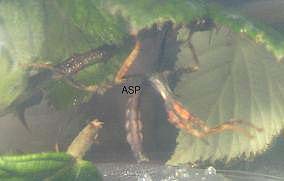
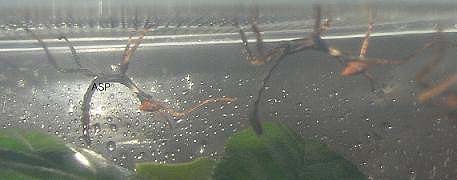
L1, one day old nymphs.
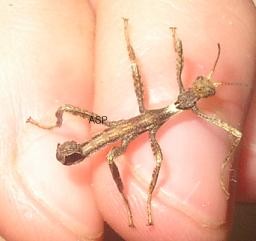
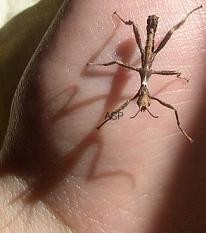
L1, 4 days old nymph.
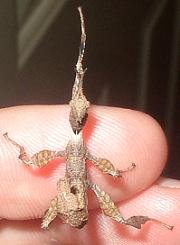 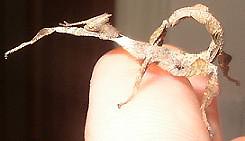
L2, 15 days old nymph.
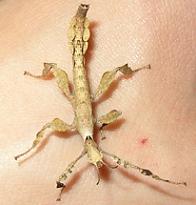 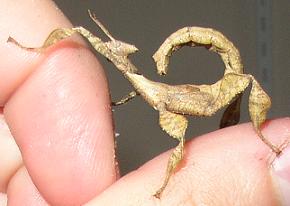
4 week old male (notice the absence of needles
on top of his abdomen).
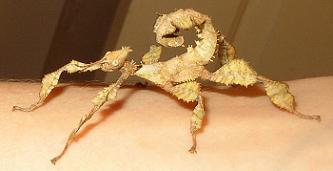 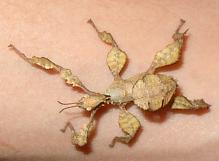
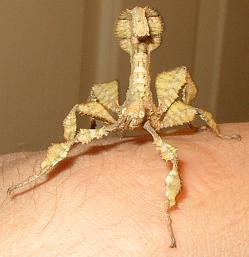
5 week old female (notice the needles on top of
her abdomen).
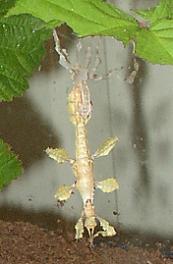
4 week old female just finishing coming out of
her exuvium.
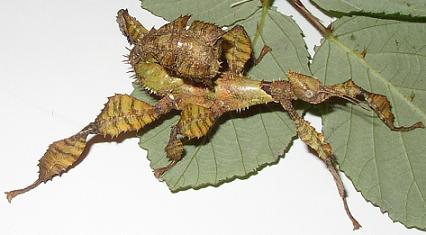 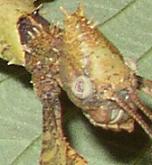
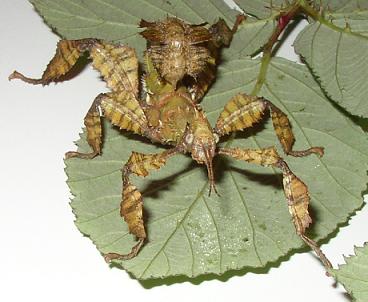
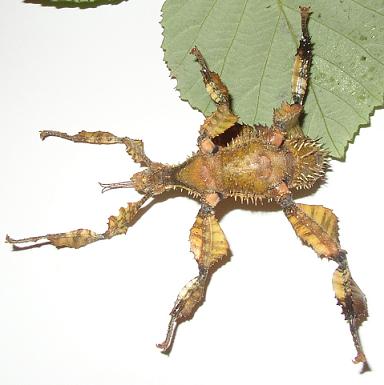
Rare green/yellow phase Extatosoma tiaratum female.
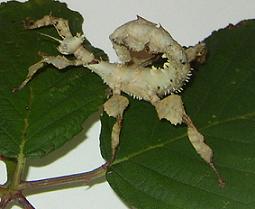
Rare white phase female.
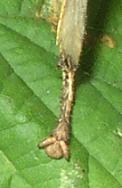
Cloth up of female's back leg.
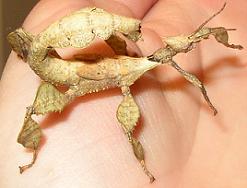
7 week old male, you can see its wings are starting
to develop already.
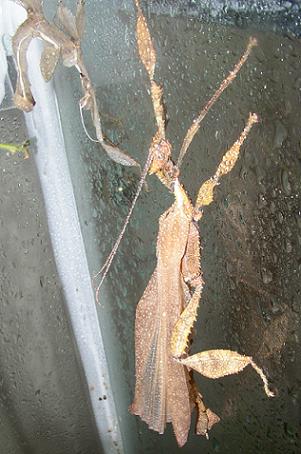
Adult male stretching its wings after molting.
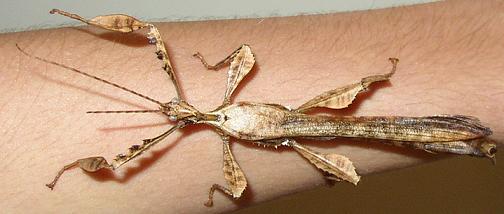 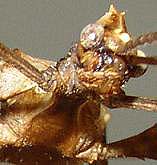
Adult male.
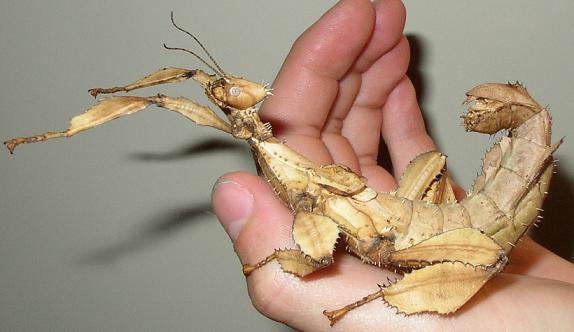
Adult female.
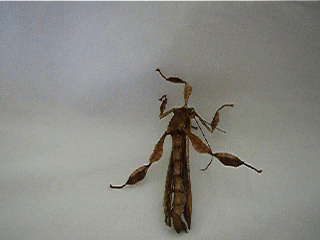
Male defending him self.
Male flapping his wings.
Male taking off. |